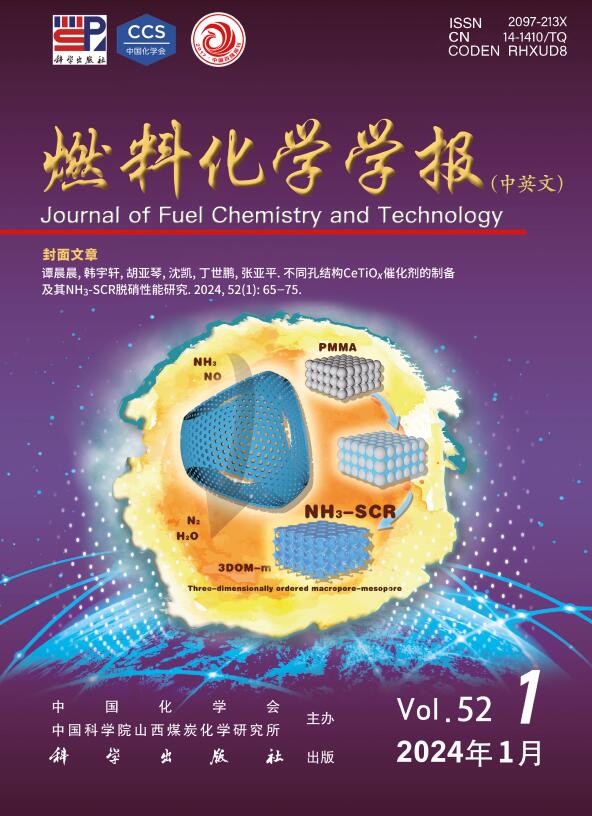Performance optimization of anodic porous transport layer in proton exchange membrane electrolyzer using multilayer perceptron model
Q3 Energy
引用次数: 0
Abstract
Resulting from the capability of resisting fluctuating energy inputs, proton exchange membrane water electrolysis (PEMWE) technology holds significant potential for green hydrogen production. The performance of PEMWE is influenced by various structural parameters, in which the properties of the porous transport layer (PTL) are particularly critical. Optimizing the structural characteristics of the PTL is important for enhancing the overall performance of PEMWE. In this study, a three-dimensional steady-state PEMWE model is firstly developed. Based on the model, polarization curves of the PEMWE under different PTL parameters are computed, and the impacts of three characteristic parameters, i.e. porosity, thickness, and conductivity, on the PEMWE performance are thoroughly investigated. Then, the corresponding performance optimization strategies are proposed by incorporating a multilayer perceptron (MLP) machine learning model. It shows that porosity plays a dominant role in the PTL performance among the three parameters, followed by thickness, with conductivity having a relatively minor impact. The increasing of porosity and reducing of thickness can effectively enhance the electrolyzer performance. According to the MLP model screening, the optimal PTL structure is determined to be the porosity of 0.52, thickness of 0.2 mm, and conductivity of 4×106 S/m. At 2 A/cm², the operating voltage of the PEMWE is 1.85 V.
基于多层感知器模型的质子交换膜电解槽阳极多孔输运层性能优化
由于质子交换膜水电解(PEMWE)技术具有抵抗波动能量输入的能力,因此在绿色制氢方面具有巨大的潜力。PEMWE的性能受多种结构参数的影响,其中多孔传输层(PTL)的性能尤为关键。优化PTL的结构特性对提高PEMWE的整体性能具有重要意义。在本研究中,首先建立了三维稳态PEMWE模型。基于该模型,计算了不同PTL参数下PEMWE的极化曲线,并深入研究了孔隙度、厚度和电导率三个特征参数对PEMWE性能的影响。然后,结合多层感知器(MLP)机器学习模型,提出相应的性能优化策略。结果表明,孔隙度对PTL性能的影响最大,其次是厚度,电导率的影响较小。孔隙率的增加和厚度的减小可以有效地提高电解槽的性能。通过MLP模型筛选,确定最佳PTL结构为孔隙度0.52,厚度0.2 mm,电导率4×106 S/m。在2 A/cm²时,PEMWE的工作电压为1.85 V。
本文章由计算机程序翻译,如有差异,请以英文原文为准。
求助全文
约1分钟内获得全文
求助全文
来源期刊

燃料化学学报
Chemical Engineering-Chemical Engineering (all)
CiteScore
2.80
自引率
0.00%
发文量
5825
期刊介绍:
Journal of Fuel Chemistry and Technology (Ranliao Huaxue Xuebao) is a Chinese Academy of Sciences(CAS) journal started in 1956, sponsored by the Chinese Chemical Society and the Institute of Coal Chemistry, Chinese Academy of Sciences(CAS). The journal is published bimonthly by Science Press in China and widely distributed in about 20 countries. Journal of Fuel Chemistry and Technology publishes reports of both basic and applied research in the chemistry and chemical engineering of many energy sources, including that involved in the nature, processing and utilization of coal, petroleum, oil shale, natural gas, biomass and synfuels, as well as related subjects of increasing interest such as C1 chemistry, pollutions control and new catalytic materials. Types of publications include original research articles, short communications, research notes and reviews. Both domestic and international contributors are welcome. Manuscripts written in Chinese or English will be accepted. Additional English titles, abstracts and key words should be included in Chinese manuscripts. All manuscripts are subject to critical review by the editorial committee, which is composed of about 10 foreign and 50 Chinese experts in fuel science. Journal of Fuel Chemistry and Technology has been a source of primary research work in fuel chemistry as a Chinese core scientific periodical.
 求助内容:
求助内容: 应助结果提醒方式:
应助结果提醒方式:


